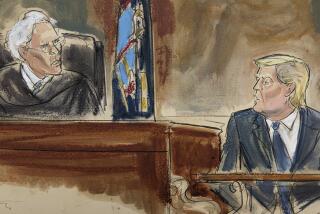Judge OKs Enron’s Plan to Reorganize
More than two years after its collapse, Enron Corp. won approval Thursday to emerge from bankruptcy protection under a plan in which creditors would receive less than 20 cents on the dollar and the Enron name would forever disappear.
Once Enron sells off some of its major assets to pay creditors, all that will be left of the scandal-ridden company -- once the nation’s seventh-largest -- will be a smattering of pipeline and power assets in 14 countries.
Houston-based Enron filed for Chapter 11 bankruptcy protection in December 2001 amid revelations of hidden debt and inflated profit accomplished through a tangle of accounting trickery. Thousands of workers lost their jobs and investors lost billions of dollars as the company’s once-highflying stock became worthless.
It was the first in a wave of corporate scandals to rattle Wall Street this decade.
The reorganization plan -- approved Thursday by a U.S. Bankruptcy Court judge in New York -- aims to pay most of the creditors about $12 billion of the approximately $63 billion they are owed with cash raised from a series of asset sales. That includes pipeline company CrossCountry Energy and Portland General Electric, a utility.
Shareholders will get nothing. Employees who lost their savings wrapped up in Enron stock are relying on lawsuits to get some payback.
What is left of Enron will be called Primsa Energy, which has gas pipelines and power plants around the globe.
Dozens of people have been charged with crimes in the federal government’s ongoing investigation of the collapse.
More to Read
Inside the business of entertainment
The Wide Shot brings you news, analysis and insights on everything from streaming wars to production — and what it all means for the future.
You may occasionally receive promotional content from the Los Angeles Times.










